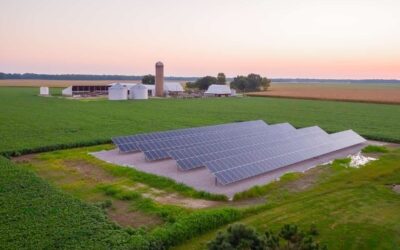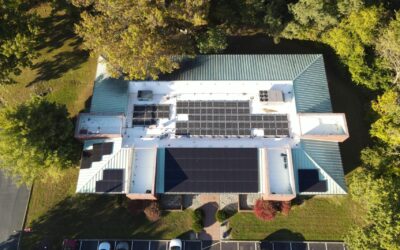Solar panels are made by arranging solar cells on a single back sheet. This arrangement of cells is covered by a glass pane and held together by a frame. The primary function of solar cells is to convert sunlight into electricity, but they can’t do this unless they go through a special manufacturing process. Let’s dive into this process in more detail. The primary material in solar cell manufacturing is silicon. Silicon is one of the most abundant materials on Earth, second only to oxygen. Its abundance makes it an ideal resource for low-cost and sustainable manufacturing. However, silicon does require mining and refinement before it can be used in manufacturing. Pure silicon is derived from silicon dioxides such as quartzite gravel or crushed quartz. The silicon then goes through phosphorus and boron treatment, also known as “doping”, to produce an excess of electrons in one layer and a deficiency of electrons in another. The imbalance in electrical charges in each layer of silicon creates a one-way semiconductor capable of conducting electricity.
Each solar cell is thinner than a piece of paper. The cells are coated with silicon nitride and slightly roughed up to create a gripping texture in order to maintain some rigidity and bear the outdoor elements. This process also reduces reflectivity so the cells can absorb sunlight to convert it to usable energy. After the solar cells are thoroughly inspected for cracks, breakage, and put through sunlight testing, they move onto the next manufacturing stage. In this stage, the cells are coated in a layer of ethylene vinyl acetate (EVA). This layer of EVA acts as an adhesive to hold the solar cells in place on the glass. Once on the glass, the cells are connected, and the grid stores the energy they conduct through a pattern of narrow metal fingers and larger busbars.
The final step to seal the cell’s application is to add another layer of EVA along with an additional back sheet to protect the internal wiring. The next stage of manufacturing is lamination. During this stage, an industrial laminator applies heat and vacuum pressure to sandwich the glass, EVA, solar cells, and wiring to bond them together into a tight weatherproof panel. The panel is then attached to an aluminum frame around the edges to keep the panel sturdy and in place. Finally, the junction box is secured to the back. Electricity generated by the panel is sent out through a pair of wires connected to the junction box. According to a 2013 study conducted by researchers at Stanford University, solar panels produce more energy than what was required to manufacture them within 1-4 years of operation. All major solar panel brands guarantee at least 25 years of production. The glass and aluminum in the panels are infinitely recyclable, and solar panel recycling is becoming a major industry as more solar is implemented globally.
As one of the most experienced energy-saving solar panel installation companies in St. Louis and the Midwest, EFS Energy is focused on helping our customers achieve energy independence by generating clean, renewable energy from solar panel systems. We offer multiple long-term warrantees and provide the quality and customer service you deserve.
If you are interested in switching your business, or farm to solar, visit our website or contact EFS today at (314)-771-5131.




